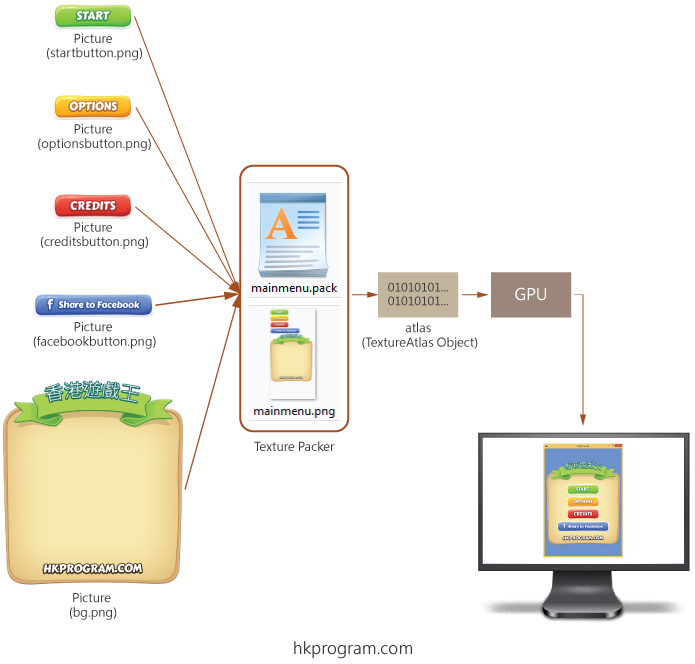
For best performance it directly exports to target system’s image formats such as PVR, KTX, and other as well.

Using Texture packer users can reduce memory storage and improve game performance. Simply drag sprite sheets to Texture packer.Using texture packer there are three easy steps to generate user’s own sprite sheets It permits users to save the setting and reuse them later on any other sheet they want to create. After installing it users only have to set them at once. It has simple interface and really easy to set up. It has lots of amazing features that are summarized below such as Main Interface It supports many formats compatible with COCOS 2D, CORONA, any engine that supports JASON and more as well. It does an incredible job of letting users to optimize their sheets with multiple options such as color, depth, auto scaling, dithering and trimming invisible pixels. TEXTURE PACKER is a best little piece of application that allows users to pack textures, assets and pretty much anything that a user wants in an effective little sheet that is compatible with many frameworks. After installing Texture packer it will load the images quickly and intelligently lay them out with the sprite sheets.
#Libgdx texturepacker vs texture packer download
The first thing that anyone needs to know is to download a copy of Texture packer. Texture packer creates and optimizes sprite sheets in user’s games. Creating a Sprite Sheet With Texture Packer Texture packer is an amazing tool that makes it extremely simple and effortless to produce these sprite sheets with the click of a button. Users find a problem when the process of getting sprites into any game can be fiddly and time consuming. As a web developer uses sprites extensively in their games to create characters, backgrounds and other items. Sprite sheets are used for the direct purpose of creating video gaming artwork,in order to get the best performance of a game. It's a really interesting topic, but not to answer in this question.In computer graphics sprite is known as two dimensional image or animation that is used in large screens. If your are new to libgdx, and you don't know about this package, this is enough information for you about this class. I've created my own Entity class, and I don't need Sprite class. This mean, you can easily rotate them and move. Sprite holds the geometry, color, and texture information for drawing 2D sprites using Batch. (Note that the name of the region is the name of the original image without the extension). Now, creating your TextureRegions would be as simple as:

Instead of creating a Texture, create a TextureAtlas, like this: pack file with de dimensions and coordinates of all of them. It will pack every texture into one image AND create a. You can use something like TexturePacker. Do you have to create TextureRegions with all the coordinates and dimensions? Do you need to open paint to count pixels? Noooo, you don't. Now, you want to use TextureRegion and one single image in power of 2 resolution with all the spritesheets and images. Here is a good explanation: Textures TextureRegion & SpriteBatch The advantage of having one Texture and multiple TextureRegion of that Texture, is that you are NOT loading every region into GPU.Īs you may be thinking, when you want to draw with the SpriteBatch, it's much more efficient to use TextureRegion instead of multiple Textures, I'm sorry my english is not good enough. Now, TextureRegion, takes a "piece" from a Texture, no matter it's dimension. You could work with other resolutions (tEnforcePotImages = false), but it's encouraged to use pow of 2. In addition, you should load power of 2 textures. When you do something like Texture t = new Texture(path), you are loading that into GPU.


 0 kommentar(er)
0 kommentar(er)
